
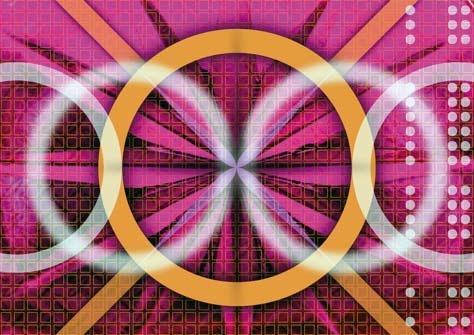
Geometrical
Optics and
Physical
Optics
By Herimanda A. Ramilison
African Virtual university
Université Virtuelle Africaine
Universidade Virtual Africana



African Virtual University
Notice
This document is published under the conditions of the Creative Commons
http://en.wikipedia.org/wiki/Creative_Commons
Attribution
http://creativecommons.org/licenses/by/2.5/
License (abbreviated “cc-by”), Version 2.5.

African Virtual University
Table of ConTenTs
I.
Geometrical Optics and Physical Optics _________________________3
II.
Introductory Course or Basic Required Notions ___________________3
III. Timetable Distribution _______________________________________3
IV. Teaching Material __________________________________________4
V.
Module Justification/Importance _______________________________4
VI. Contents _________________________________________________4
6.1 Overview _____________________________________________4
6.2 Schematic Representation ________________________________5
VII. General Objectives _________________________________________6
VIII. Specific Learning Activity Objectives ____________________________7
IX. Teaching and Learning Activities ______________________________10
X.
Key Concepts (Glossary) ____________________________________16
XI. Mandatory Reading ________________________________________17
XII. Mandatory Resources ______________________________________20
XIII. Useful Links _____________________________________________21
XIV. Learning Activities _________________________________________31
XV. Module Synthesis _________________________________________80
XVI. Summary Evaluation _______________________________________81
XVII. Bibliographical References __________________________________92
XVIII. About the Author __________________________________________93
XIX. File structure _____________________________________________94

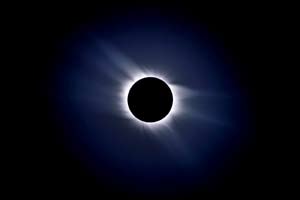
African Virtual University
I. Geometrical optics and Physical optics
Herimanda A. Ramilison (This section is unnecessary and should be deleted)
II. Introductory Course or basic notions
Required
To follow this module, the learner must master the following concepts:
Trigonometric equations, solution of first order equations with a single unknown
variable, the concept of mirror images;
The fundamental principles of dynamics (vectorial representation of a force,
graphical representation using a coordinates system);
General theorems of kinetic energy, angular momentum;
The following energy-related definitions: kinetic and potential energy stored
in a capacitor, in a coil, mechanical or electrical (system?); (The highlighted in
yellow is vague)
Ohm’s Law (study of electronic oscillators);
The mesh or loop rule applied to an electrical circuit;
The potential difference at the terminals of a coil, a resistor and a capacitor;
Solution of the following differential equations: second order, linear, with constant
coefficients, with or without a second variable;
Sinusoidal movements;
Complex representation of a sinusoidal magnitude with respect to time;
Fresnel vectors;
Partial derivative (differential?) equations.;
III. Timetable Distribution
Unit 1 Geometrical Optics : 50 hours
Unit 2 Oscillations : 15 hours
Unit 3 Waves: 15 hours
Unit 4 Sound waves : 10 hours
Unit 5 Interference of Light: 30 hours


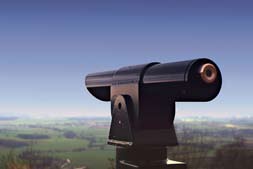
African Virtual University
IV. Teaching Material
Computer with CD-ROM, video projector, television, Internet access, word
processor, Excel, PowerPoint…
V. Module Justification/Importance
The current module is part of a teacher training program.
It will enable the learners to understand what they see (rainbows, mirages…),
comprehend how to improve vision (eyeglasses, a magnifying glass, a micros-
cope, a telescope…).
To possess knowledge about vibratory or oscillatory movement relative to a com-
mon notion: waves. This module explains the fact that it is impossible to obtain a
very narrow ray of light simply by decreasing the diameter of the exit point.
VI. Contents
6.1
Overview
In this module, the concept of light’s behavior when reflected from the same
medium or at the interface between two different media will be treated.
The construction of images obtained through optical systems and different types
of lenses will be discussed. Certain optical systems will be presented in this
module: the eye, a magnifying glass, a microscope, a telescope, a camera, along
with the way they work by calculating focal lengths, magnification and vergency
(optical power). The module explains the comprehension and correction of vision
problems: farsightedness, nearsightedness.
The next step will be to explain essential wave-related concepts, along with the
way they interact. The observation that the pitch of sound from a siren changes
when the source or receiver or both moves will be elucidated. The concept of phase
will allow the understanding of phenomena such as interference or diffraction
when two apparently identical phenomena are superimposed.


African Virtual University
The current module deals with:
•
Reflection, refraction,
•
Polarization, Brewster’s Law,
•
Plane mirrors, curved mirrors,
•
Curved refractive surfaces,
•
Thin lenses,
•
Optical instruments,
•
Harmonic oscillators,
•
Standing waves and resonance,
•
The Doppler Effect,
•
Beats,
•
The Superposition Principle,
•
Light wave interference and diffraction.
6.2 Schematic Representation
Geometrical
Optics
Fermat’s Principle
Reflection
Plane surface,
Astigmatism
Refraction
lenses
Snell-Descartes Laws
Paraxial (or Gauss)
Approximation
Optical
Aberration
Systems
Oscillation
Diffraction
Oscillator movement
Light interference
Mechanical Waves
Sound waves
Traveling waves and
Transverse waves and
stationary waves
longitudinal waves

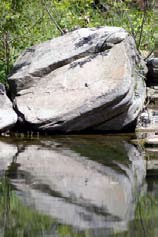
African Virtual University
VII. General objectives
The learner must be able to :
Knowledge Goals
-
Recall Descartes’ Laws,
-
Recall Brewster’s Law,
Method Goals
Theoretical Abilities:
-
Understand polarisation,
-
Understand the functioning of optical systems,
-
Understand oscillatory movement;
-
Understand characteristic wave elements ;
-
Understand wave superposition ;
-
Understand the elaboration of a simple question ;
(how will understanding be measured?)
Practical or Experimental Abilities
-
In a team, demonstrate an experiment about reflection using a mirror,
paper and needles ;
-
Find the image of a real object using a converging lens ;
-
Converse with colleagues by chatting online.(A social chat? Be speci-
fic)

African Virtual University
VIII. specific learning objectives
(learning Goals)
Unit 1 Geometrical Optics
Specific Knowledge Goals:
Recall Descartes’ Laws;
Describe a thin lens using its definition;
Describe the optical components of a microscope;
Specific Theoretical Ability Goals:
Apply Descartes’ Laws;
Apply the Paraxial Approximation;
Determine the focal length for a curved mirror,
Determine the focal length for a thin lens;
Determine vergency; (optical power)
Determine magnification;
Determine lens characteristics required to correct myopia;
Specific Practical Ability Goals
In a team, carry out the reflection experiment using a mirror, paper and nee-
dles;
Experimentally determine an object’s image through a thin lens;
Build an object’s image using a combination of several thin lenses
Build an image for a farsighted person;

African Virtual University
Unit 2 Oscillations
Specific Knowledge Goals:
Recall the definitions for oscillatory movement characteristics;
Specific Theoretical Ability Goals :
Determine the characteristic elements of oscillatory movement;
Use the equations related to oscillations;
Unit 3 Waves and Sound Waves
Specific Knowledge Goals:
Recall the definitions for wave characteristics;
Recall sound wave equations
Specific Theoretical Ability Goals:
Identify the different wave types;
Explain energy transfer;
Apply the wave equation to sound;
Explain the nature of the decibel scale;
Describe sound waves emitted from a point source;
Explain the effects of relative movement between sources of sound
Unit 4 Light Interference
Specific Knowledge Goals:
Recall the conditions needed to produce interferences;
Specific Theoretical Ability Goals:
Identify interferences by wave front division;
Identify interferences by amplitude division;
Explain the effects of superposition;
Explain diffraction.

African Virtual University
Optional Educational Objective:
Create a short question
TIC integration (Specify what TIC means)
Communicate via the Web (What is the specific reason for this?)

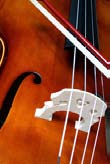
African Virtual University 0
IX.
Teaching and learning activities
9.1
Preliminary / Initial Evaluation
Preliminary Evaluation Title
Geometrical Optics and Physical Optics
Justification
This consists of finding out what the learner already knows about optics and
waves.
QUESTIONS
1. The mirror image of a point A is point A’, which can be observed by any
observer O if all the beams reflected by the mirror M from A seem to come
from point A’.
a. True
b. False
2. A lens is a centered system made up of a ………….. homogenous and
………… medium and restricted by two …………. surfaces with radii R 1
and R , respectively.
2
Fill in the blanks with one word each.
3. Match up the following columns by associating the right letter and number
together: (each formula describes one of the concepts)
a. Vergency (optical power)
1.
AʹB
A ʹ B
� (� A
( ʹB
A ʹ B
� =
� longueur
= image × ⋅ de⋅l
length ')
)
image
AB
A
B
( AB
A
B = longueur
object × ⋅ de⋅l
length ')
)
objet
α ʹ �
( (
� image
diamètre⋅ apparent
×
⋅ diameter
×
)
image
)
b. Magnification
2.
α �
( ( object
diamètre⋅ apparent
×
⋅ diameter
×
)
objet
)
1
c. Enlargement
3. f

African Virtual University
4. A magnifying glass is used to:
a. decrease the apparent diameter of an object’s image compared to the object
as seen by the naked eye.
b. enlarge the apparent diameter of an object’s image compared to the object
as seen by the naked eye.
c. shift the apparent diameter of an object’s image compared to the object
as seen by the naked eye.
Check off the right answer(s).
5. Observing a solar eclipse with a magnifying glass:
a. can cause blindness
b. can cause short-sightedness
c. can cause far-sightedness
d. is not harmful
Check off the right answer(s).
6. A plane mirror has a surface that is
a. flat,
b. curved,
c. transparent,
d. polished,
e. reflective.
Check off the right answer(s).
7. In a plane mirror, the image of an object is:
a. reversed
b. upside-down
c. superimposable onto the object
Check off the right answer(s).
8. With a converging lens, the image of an object is:
a. real
b. virtual
Check off the right answer.
9. If the height of the waves in relation to sea level is 2 meters, their amplitude
is:
a. 1 meter
b. 2 meter
c. 4 meter
Check off the right answer.

African Virtual University
10. If the matter is moving in a direction that is parallel to the wave’s direction
of propagation, the wave is said to be:
a. traveling
b. stationary
c. longitudinal
d. transverse
Check off the right answer(s).
11. If the matter is moving in a direction that is perpendicular to the wave’s di-
rection of propagation, the wave is said to be:
a. traveling
b. stationary
c. longitudinal
d. transverse
Check off the right answer(s).
12. Two waves with the same frequency are superimposed; constructive interfe-
rence is obtained when the phase difference is:
π
a. 0
b. 2
c.π
Check off the right answer(s).
13. Two waves with the same frequency are superimposed; destructive interfe-
rence is obtained when the phase difference is :
π
a. 0
b. 2
c.π
Check off the right answer(s).
14. The sound of an ambulance’s siren as it approaches:
a. does not change
b. becomes more high-pitched
c. becomes more low-pitched
Check off the right answer.

African Virtual University
Preliminary Evaluation Title
Geometrical Optics and Physical Optics
Answer key
1.
a. Good answer. You certainly know how to construct the image of an object
through a mirror.
b. Be careful, take your time to answer.
2. A lens is a centered system made up of a transparent, homogenous and
isotropic medium restricted by two curved surfaces with radii R and R ,
1
2
respectively.
Very good. You understand the definition of a lens.
If the student switches certain words by writing isotropic instead of
transparent, for example, give the following feedback: You’ve confused
isotropic and transparent, please try again.
If the student writes transparent instead of curved, give the following
feedback: You have confused transparent and curved, please try again.
3.
a3. Good combination. The expression truly is the vergency (optical power)
formula.
b1. Good job. The formula really is the one that describes magnification.
c2. Good answer. This equation is used to determine enlargement.
4.
a. Try again. You most likely have never used a magnifying glass.
b. Good job, you know what a magnifying glass does.
c. Careful, a magnifying glass doesn’t have that role.
5.
a. Congratulations. You have understood that you must never look at a solar
eclipse with a magnifying glass.
b. It’s stronger than myopia.
c. It’s more acute than far-sightedness.
d. Watch out, a magnifying glass does indeed damage the eye.

African Virtual University
6.
a. Good job. A plane mirror’s surface is indeed flat, just like its name sug-
gests.
b. Careful. Why curved?
c. Do you know what transparent means?
d. Good answer. A plane mirror’s surface must be polished.
e. Very good. In fact, a plane mirror’s surface must be reflective or we would
not be able to see our reflection.
7.
a. Good answer. You noticed that right and left are switched around.
b. Certainly not ; the head is not on the bottom with the feet on top is it ?
8.
a. Very good. The image truly is real.
b. Why virtual? It is not a diverging lens.
9
a. Sea-level must not be below the height of the waves.
b. Good answer; average sea-level is the same as the height of the waves.
c. Sea-level cannot be twice the height of the waves.
10.
a. Try again.
b. Careful, most definitely not stationary.
c. Congratulations. The wave that is moving in a direction that is parallel to
the direction of propagation is indeed called longitudinal.
d. Take your time, a transverse wave travels perpendicularly to the direction
of propagation.
11.
a. Try again after rereading the question
b. Careful, most definitely not stationary.
c. A longitudinal wave travels parallel to the direction of propagation. Try
again.
d. Good job. If the wave is moving perpendicularly to the direction of pro-
pagation, it is called transverse.
12.
a. Good answer. The interference will be constructive.
b. Give it some thought before answering.
c. Read the question again. The two waves are not opposed to one ano-
ther.

African Virtual University
13. Two waves with the same frequency that have a phase difference of � will
produce a destructive interference.
a. Careful, the two waves are out of phase.
π
b. Caref




























